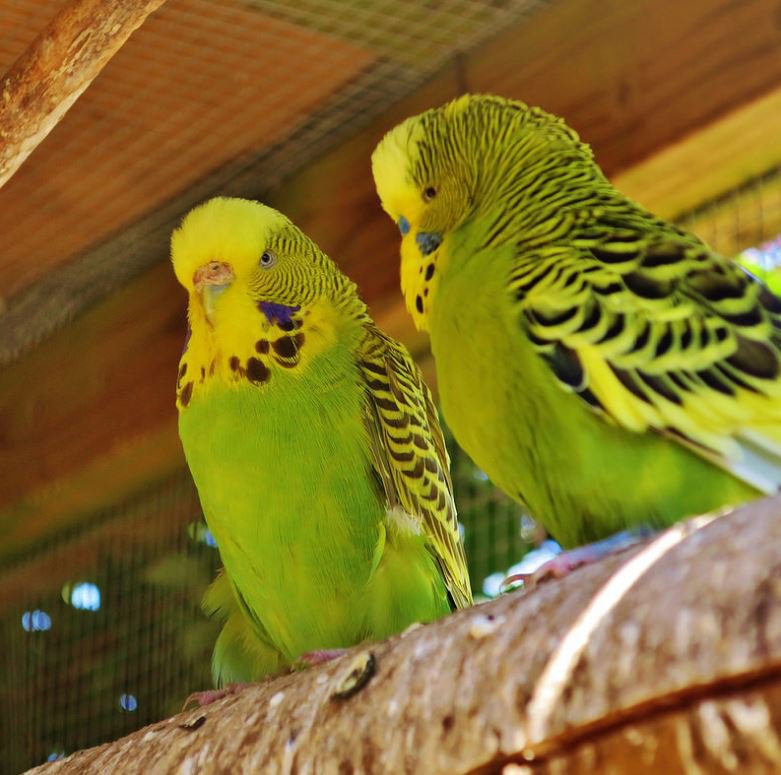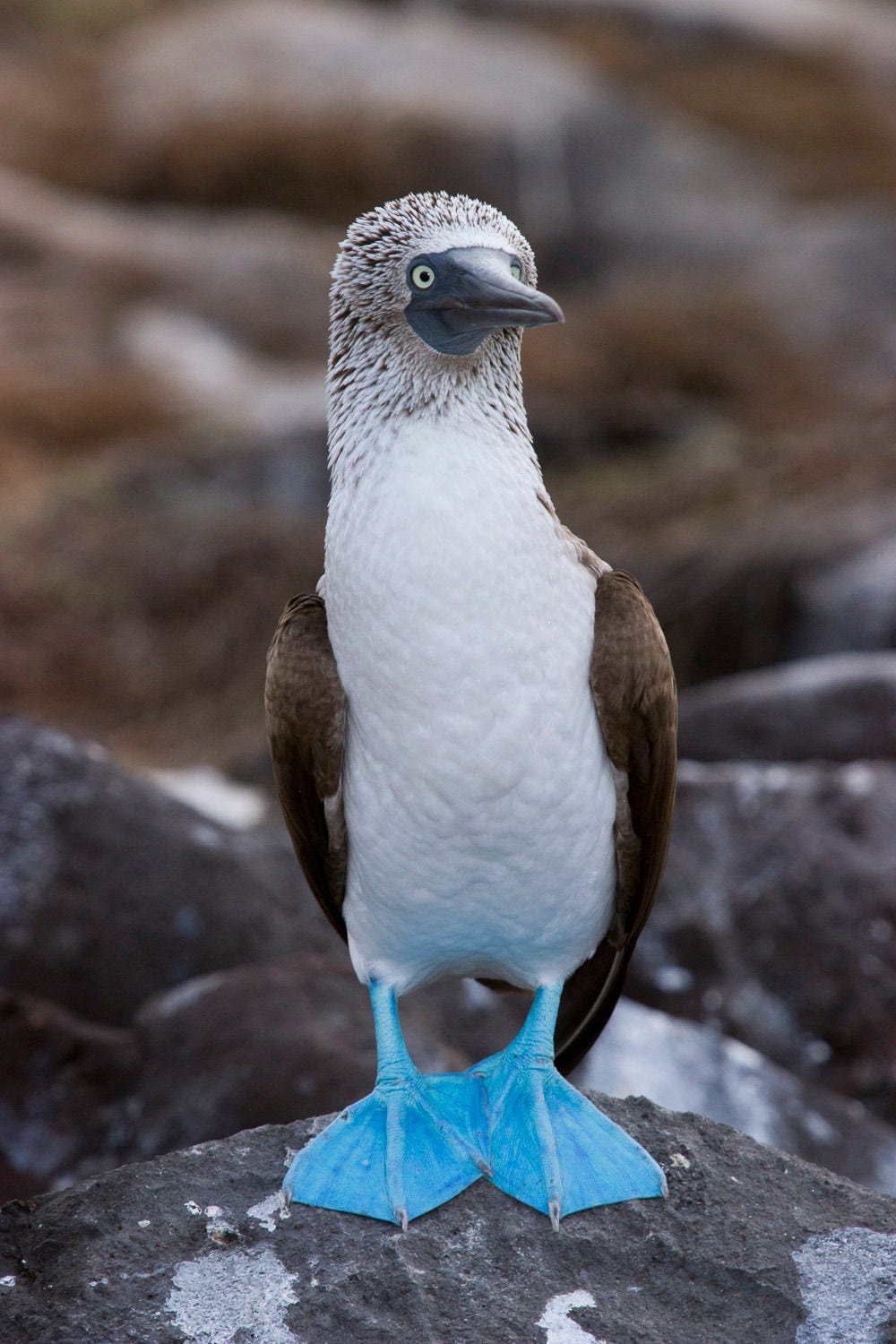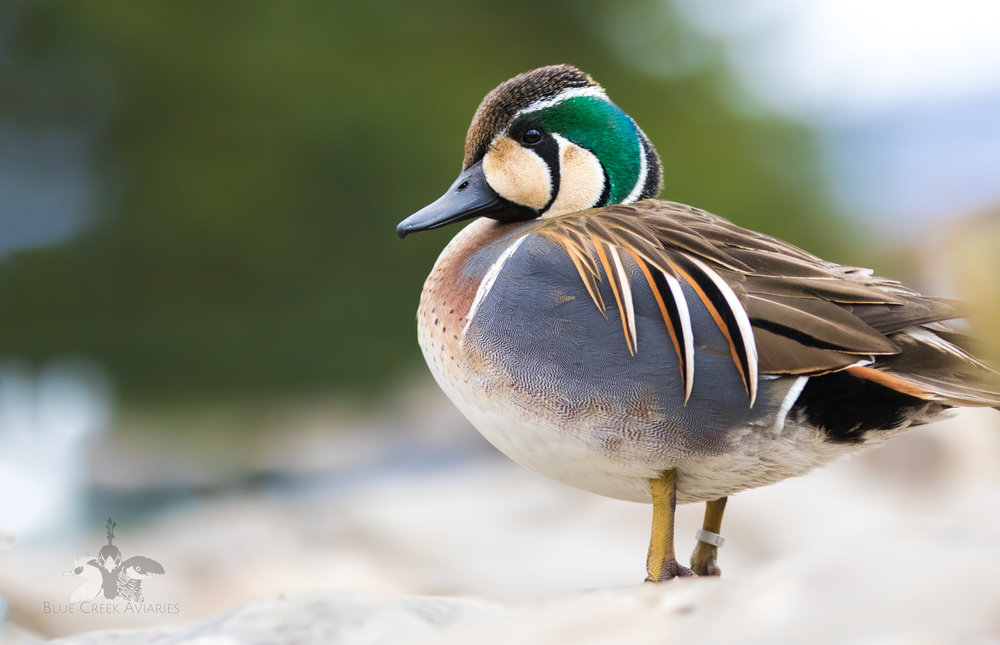If you are in the mood to have some fun, then you should give this list a try. We have gathered 29 birds that start with B for you. These birds are truly amazing and it would be wise to read about each of them. For each bird, I have included the picture, the common name, their scientific name, which family they are part of, and many other details.
Bald Eagle (Haliaeetus leucocephalus)

Honored as the national bird of the United States, the Bald Eagles are a North American eagle species belonging to the Sea-eagle genus.
Although they have “bald” in their name, they’re not truly bald but have white feathers on their head that gives them that impression. These birds can easily be identified even from a distance because of their striking brown body and white head and tail.
Bald Eagles live between 30-35 years in the wild. Both sexes are identical and display dimorphism in their size, with the females being roughly 25% larger and heavier than their male counterparts.
Black-browed Albatross (Thalassarche melanophris)

Popularly known as the “Black-browed Mollymawk,” the Black-browed Albatrosses are the most widespread members of the albatross family, Diomedeidae.
These seabirds breed on 12 islands throughout the southern oceans and are circumpolar. Their primary food sources are fish, squid, crabs, carrion, and fishing discards. They can live up to 70 years, which is quite extraordinary in the avian world.
Blue Jay (Cyanocitta cristata)

Belonging to the Corvid family, the Blue Jays are considered one of the most intelligent bird species in the world. These corvids are endemic to North America and are mostly resident, with some populations participating in migration during winters.
Like most corvids, the Blue Jays are also sexually monomorphic. They have a pale bluish-white face turning whiter in the lower parts of their underbody.
On the other hand, their head, back, wings, and tails are a brilliant shade of blue, with black and white markings scattered on the wings and tail. They also have a blue crest on their head, which changes its position according to their mood.
Burrowing Owl (Athene cunicularia)

Commonly found throughout North and South America, the Burrowing Owls are small owl species that are named after their tendency of nesting in the burrows. These owls stand out due to their diurnal nature, which is a rarity in the owl family.
Burrowing Owls have an overall brown body with white spots all over them; they lack a flattened facial disk and ear tufts common in most owls. Their legs are quite long in comparison to their body.
These birds have a diverse diet consist of all kinds of invertebrates and several small vertebrates. Moreover, they’re also seen enjoying fruits and seeds, something that is highly unlikely among the owls.
Budgerigar (Melopsittacus undulatus)

Commonly referred to as “Budgie,” the Budgerigars are small members of the parrot family that have been ranked as the third most popular pet globally, after dogs and cats.
These little birdies are known by many names, including “Common Parakeet” and “Shell Parakeet.” These birds have yellow heads and wings, with heavy black streaking on them. The underparts of their body are green, growing darker towards the rump. Their tail is also colored in green.
Although both sexes of adult budgies appear similar, the color of their cere is used to tell them apart. While the males have a bright blue cere, their female counterparts have a pale white or yellow one.
Brown Pelican (Pelecanus occidentalis)

There are only three pelican species you can find in the Americas, and the Brown Pelicans are one of them.
Of all the pelican species found globally, the Brown Pelicans are the smallest ones. These birds are sexually monochromatic, but you can notice some seasonal changes in their plumage.
In the breeding season, the adults display a dark maroon color on their necks, while the yellow wash on their white heads turns brighter.
On the other hand, in the non-breeding adults, the neck is colored just like the head, with the same pale brown wings and lighter underparts. The crown on their head also grows dull.
Brandt’s Cormorant (Urile penicillatus)

Named after Johann Friedrich von Brandt, a German naturalist, Brandt’s Cormorants are large marine birds that have dark, glossy bodies. In the breeding season, these birds develop a bright blue throat patch.
Brandt’s Cormorants are migratory birds that breed on the Pacific coast of North America. Rockfish and Herrings make up over 90% of their diet, although you might spot them going after shrimps and crabs once in a while.
Black-crowned Night Heron (Nycticorax nycticorax)

Black-crowned Night Herons are ranked among the most widespread heron species globally. Just as their name suggests, these herons have a bold black crown on their head, while the rest of their body is whitish-grey, turning darker towards the rump.
The wings of these birds are a darker shade of grey, with yellow legs. The adults display no dimorphism in plumage; only the males are slightly larger in size. These birds are known to live about 10-15 years in the wild.
Black Vulture (Coragyps atratus)

Black Vultures are the second most widespread vulture species in the Americas, after the Turkey Vultures. Being the only surviving members of their genus, these scavenging birds are commonly spotted feeding on garbage near human settlements.
Black Vultures are one of the protected species under the Migratory Bird Treaty (1918) in the United States. They’re sexually monomorphic, with both males and females having a glossy, black plumage.
Barnacle Goose (Branta leucopsis)

Barnacle Geese are members of the black geese genus that show a striking resemblance with the Brent Geese. These waterfowls are medium-sized and have a white face on a contrasting black head and neck.
Their belly is white with pale linings, while the wings and upper parts are covered in a silver-grey shade. Barnacle Geese are sexually monomorphic, with both adult sexes appearing identical.
Black-Footed Albatross (Phoebastria nigripes)

Named after their dark, webbed feet, the Black-Footed Albatrosses are large seabirds that are commonly found in the Northern Hemisphere.
Although they’re individually large in size, they’re ranked as the smaller species among their family members (other albatrosses). Their plumage is covered almost completely in pale black, with white markings around their bill.
The adults are sexually monochromatic, with the females being larger in size than their male counterparts.
These albatrosses mainly feed on flying fish and squid eggs, occasionally going after the crustaceans in pelagic waters. Plastics, as well as other floating trash, can also be consumed by them at times.
Black-capped Petrel (Pterodroma hasitata)
The Black-Capped Petrels are large members of the gadfly petrel genus that are endemic to the West Indies. The population of these petrels is critically endangered due to increased predation and population loss.
These birds have some resemblance to the Bermuda Petrels in plumage but are larger than the latter. They’re also colloquially referred to as “Diablotin” within their breeding range, owing to nocturnal schedule and strange mating calls.
Black Rosy-Finch (Leucosticte atrata)
Endemic to the alpine regions of the western United States, the Black Rosy-finches are endangered species of tiny passerine birds.
Very little is known about the sexual dimorphism between their adults. In general, they have a grey head with a characteristic black cap.
The rest of their body is similarly colored and covered with pale markings. Their dark tail is significantly forked and is often used as a field identification mark.
Being omnivores, these birds feed mainly on insects and seeds. They’re primarily ground foragers and can also be seen picking seeds in the snow-covered fields.
Bronzed Cowbird (Molothrus aeneus)

The Bronzed Cowbirds are members of the New World Blackbird (Icterid) family that are found in North and Central Americas. Within the United States, these birds can be found in Louisiana, Arizona, Texas, and New Mexico.
The adult Bronzed Cowbirds display a strong sexual dimorphism. The males have a jet-black plumage with a greenish-bronze sheen, while the females have a dull black plumage with brown underparts.
Both sexes have the same brown eyes. In the breeding season, the eyes of the males turn red, which is why they were formerly named the “Red-eyed Cowbird.”
Band-rumped Storm Petrel (Hydrobates castro)
Named after the bold white band on their rump, the Band-rumped Storm Petrels are members of the Storm Petrel family that breed on the warm islands of the Pacific and Atlantic oceans.
These petrels are also commonly known by other names, such as “Harcourt’s Storm Petrel” after Edward Harcourt and “Madeiran Storm Petrel.”
Other than their characteristic white rump-band, these petrels have an overall brownish-black body, with both adult sexes being identical.
Blue-footed Booby (Sula nebouxii)

Named after their brilliantly colored feet, the Blue-footed Boobies are one of the six members of the Sula genus. These birds breed in the tropical and sub-tropical areas of the Pacific Ocean.
Being strictly marine birds, these boobies feed exclusively on fish and generally hunt for food in groups; you’ll rarely find them hunting alone.
Both sexes of the adult Blue-footed Boobies are identical in their plumage; they have a pale brown head and neck with heavy white streaking. A white shade extends to their rump, while their wings and tails are brown in contrast.
In terms of size, these birds are dimorphic, with the females being taller than males.
Brown Booby (Sula leucogaster)
Brown Boobies are another member of the Sula genus but have a more widespread population.
Just as their name suggests, the head and upper parts of these birds are covered in brown, with their underparts being white. The females are larger and heavier than their male counterparts, which is a major distinguishing factor between the species.
Blue-winged Teal (Spatula discors)

Blue-winged Teals are a migratory duck species endemic to North America, where they breed. During winters, these ducks are known to migrate to Central America.
The adult Blue-winged Teals are sexually dimorphic, with the males have a dark greyish head and back, with a white crescent near the bill. The rest of their body is light brown, with a white patch near the tail.
On the other hand, the females are fully covered in a mottled brown body and lack the facial crescent. However, both sexes display a blue patch on their wings, after which they’re named.
Baikal Teal (Sibirionetta formosa)

Baikal Teals are a migratory dabbling duck species that breed in eastern parts of Russia. Until recently, the population of these ducks was vulnerable due to hunting and poaching but is now moved to the Least Concern List by the IUCN.
Baikal Teals are known by several names, including “Squawk Duck” and “Bimaculate Duck.” The adults are sexually dimorphic, with the males having their faces colored in buff-white, black, and green. The rest of their bodies are colored equally attractively.
On the other hand, the females have an overall greyish body with white markings scattered all over.
Barrow’s Goldeneye (Bucephala islandica)

Similar in appearance to the Common Goldeneye, Barrow’s Goldeneyes are a sea duck species that have a large, bulbous head like the Buffleheads. These birds have been named after Sir John Barrow.
Barrow’s Goldeneyes are sexually dimorphic; the males are colored entirely in black and white, except for their yellow irises and bill. On the other hand, their female counterparts are mostly dull brown in color with white streaks on their sides.
Black Rail (Laterallus jamaicensis)

Black Rails are an endangered rail species in parts of North American, the Caribbean islands, and the Pacific coasts of South America.
These rails have a small, almost mouse-sized body with red irises and a short bill.
Their body is covered in overall dark grey plumage, with white spots on their wings. Both sexes are identical and display negligible sexual dimorphism.
Black Rails have a high-pitched, aggressive call sounding like “ki ki krr,” which might be indicative of their territorial nature.
Black-bellied Plover (Pluvialis squatarola)
Although the Black-bellied Plovers are also referred to as “Grey plovers” in some regions, the former is more suited to their physical traits. These wading birds have black underparts extending up to the lower half of their face.
Their head and upperparts are white in contrast, with brown markings on their wings. Like all other plovers, these birds have long, black legs and bills and are known to hunt for food on the beaches. Insects, crustaceans, worms, and mollusks are their main food sources.
Black Scoter (Melanitta americana)

Also referred to as the “American Scoter,” the Black Scoters are a large and stocky sea duck species found in the Northern parts of North America. These ducks are migratory ducks that travel to the coasts of the United States during winters.
Black Scoters have a bulky body and heavy head, which supports a large bill. Both sexes have a yellow bill but are otherwise dimorphic, with the males having an all-black body, while their female counterparts are mostly brown.
Black-necked Stilt (Himantopus mexicanus)

Black-necked Stilts are a moderately-sized shorebird species that have a widespread distribution throughout the coasts and wetlands of the Americas.
While some might consider them as a subspecies of the Black-winged Stilts, the two have significant differences. The Black-necked Stilts have a black-and-white body, with the exception of long, pink legs.
While the upper half of their head and the rest of their upper body is black, their lower face and body are white. They also possess black irises and a long, thin black bill. You can see two white spots on the black part of their face, one over each eye.
Black-capped Vireo (Vireo atricapilla)
Endemic to the United States and Mexico, the Black-capped Vireos are a tiny, threatened vireo species. As their name suggests, these birds have a black cap atop their head, with olive-green upperparts and white underparts.
The adults are sexually dimorphic; the females have duller plumage and a greyish crown instead of a black one.
Black Oystercatcher (Haematopus bachmani)

Belonging to the oystercatcher family, the Black Oystercatchers are a moderately-sized shorebird species found on the shorelines of North America. These birds are the only members of their family found within their range.
They have an overall black body with pink eye rings and bill and paler feet. Inhabiting the coastal areas, these birds mainly feed on the invertebrates of the marine world, such as limpets and chitons. Occasionally, they will also feed on crabs and barnacles.
Bachman’s Sparrow (Aimophila aestivalis)

Bachman’s Sparrow is a tiny American sparrow species found only in the south-eastern United States. They’ve been named after Reverend John Bachman.
The upperparts and the crowns of adults are brown, with grey and black streaks on the neck, back, and primaries. These sparrows prefer to inhabit regions with a deep understory and scattered scrubby plants.
Black Noddy (Anous minutus)
Popular as the “White-capped Noddy” after the white patch above their head, the Black Noddies are a medium-sized tern species found across the Caribbean islands.
Black Noddies have a completely black body, including the eyes, bill, legs, and webbed feet, except for the touch of white on their head. There is little data about the sexual dimorphism in their sexes.
Bicknell’s Thrush (CatharusBicknelli)

Named after the amateur American ornithologist Eugene Bicknell, the Bicknell’s Thrushes are a vulnerable thrush species found in the coniferous mountain forests of North America.
Adult Bicknell’s Thrushes are sexually monochromatic, with the males being larger than their female counterparts. Both sexes have olive-brown upper bodies and wings with a chestnut tail. Their underparts are buff white, containing dusky spots on their throat and chest.
Conclusion: Birds That Start With B
Alright, it’s time to end this mega list of birds that beginning with B. I hope you enjoyed reading it as much as I did writing it for you!
We have covered quite a few birds today, haven’t we? The best part would have to be the Bald Eagle. It has all the feathers to prove its royalty. It can even dive into the water to capture fish. What an excellent bird the bald eagle is!
Happy bird watching!
Birds By Alphabet (A-Z List)
Birds that Start with A
Birds that Start with B
Birds that Start with C
Birds that Start with D
Birds that Start with E
Birds that Start with F
Birds that Start with G
Birds that Start with H
Birds that Start with I
Birds that Start with J
Birds that Start with K
Birds that Start with L
Birds that Start with M
Birds that Start with N
Birds that Start with O
Birds that Start with P
Birds that Start with Q
Birds that Start with R
Birds that Start with S
Birds that Start with T
Birds that Start with U
Birds that Start with V
Birds that Start with W
Birds that Start with X
Birds that Start with Y
Birds that Start with Z







